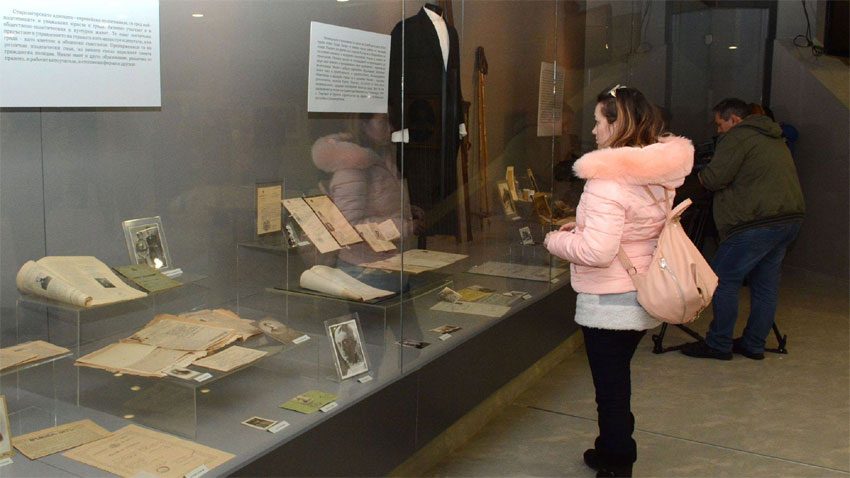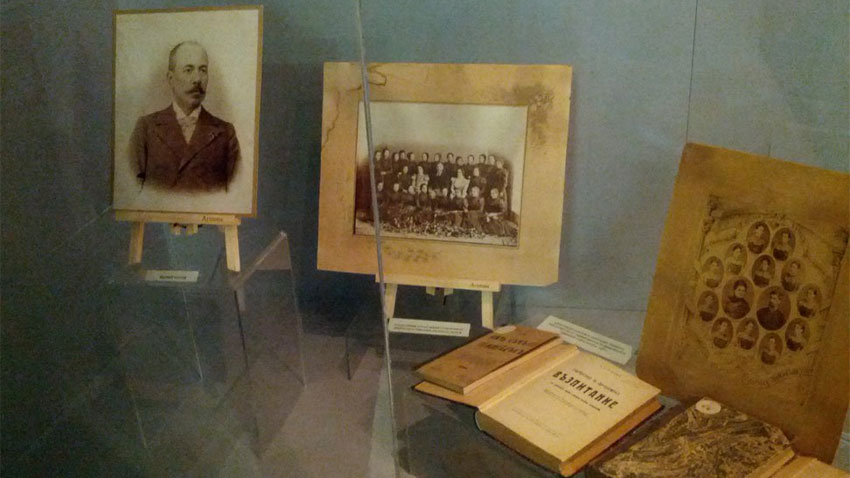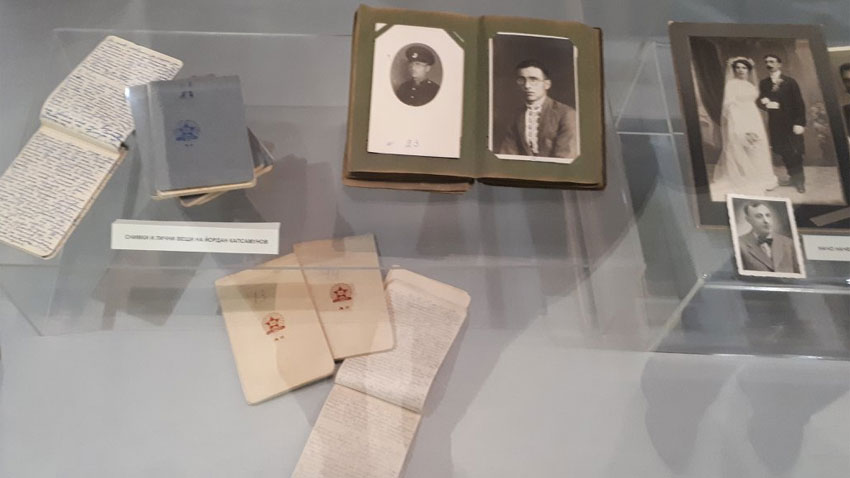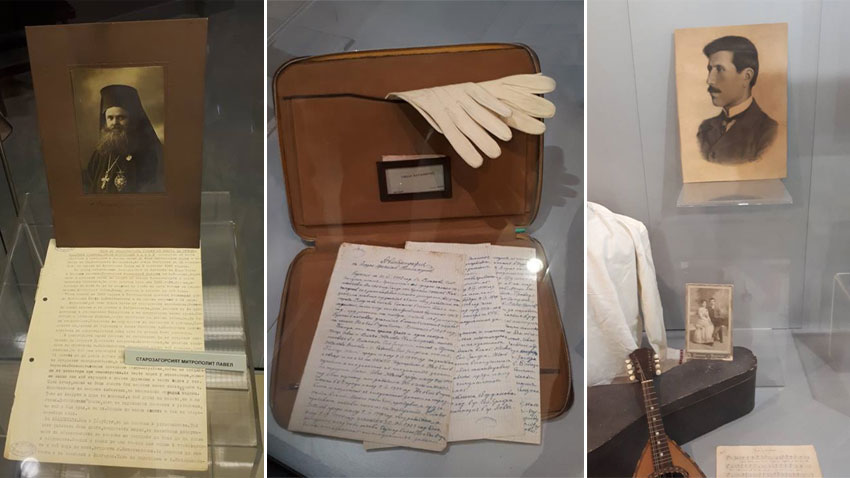An exhibition entitled “With the spirit of Bulgaria and the thought of Europe” is on at the Regional Museum of History in Stara Zagora until the end of June. The exhibition is dedicated to the Bulgarian Presidency of the Council of the EU and presents different figures who were born or came to live in Stara Zagora, people whose efforts were focused on rebuilding the town and the country, liberated from Ottoman domination.
They all received their education abroad, and even though they had opportunities to follow an academic or professional career there, opted to come home, to Bulgaria. The idea is to bring back to life “the names of the people who reconstructed Stara Zagora,” which “had been reduced to ashes and razed to the ground by the Turkish hordes and which had to be rebuilt from scratch,” says curator Rayna Antonova.

“The exhibition covers the end of the period of Bulgaria’s National Revival – up to the mid-20th century – when, having graduated from prestigious European universities, these people came to live in Stara Zagora and made every effort to reconstruct it and turn it into a modern European town with an advanced level of culture, education, economy and commerce. The exhibition showcases a number of individuals, like the first metropolitan bishop of Stara Zagora Metodi Kusev who put a lot of effort into building Ayazmoto Park – the town’s beating green heart. There is a big group of schoolteachers, prominent among them being Anastasia Tosheva – the first Bulgarian female teacher with a university education in pedagogy, obtained in Odessa. Alexander Kozarev, also a teacher, was a prominent public figure of encyclopedic learning, in command of seven languages and with three university degrees from prestigious European universities. As we were preparing for the exhibition we discovered many interesting, though little known figures, who came to live in the town and who made their contribution to its development. They include Dr. Kiro Vazov, brother of the patriarch of Bulgarian literature Ivan Vazov, and his son Dr. Ivan Vazov – a doctor of law, lawyer and also prominent figure in the life of the town. We also focus on a whole constellation of artists, engineers and architects from Stara Zagora.”

The exhibition also presents individuals who have contributed to the development of the country as a whole.
“There are a number of people who have blazed a trail in the overall cultural and political development of Bulgaria. Academician Andrey Toshev graduated natural sciences abroad and, for some time, worked as a teacher. He is a scientist, a member of the Bulgarian Academy of Learning (predecessor to the Bulgarian Academy of Sciences), diplomat and politician, and in the mid-1930s – prime minister of Bulgaria. Dr. Ivan Garvanov specialized physics and obtained a PhD at the Imperial and Royal Polytechnic Institute in Vienna. Despite the prospects of an excellent career abroad, he chose to return to Bulgaria and was to become one of the founders of the Internal Macedonian-Edirne Revolutionary Organization, dedicating his life to the liberation of Macedonia, an ideal he laid down his life for. Mathematician Ivan Salabashev is another prominent public figure, politician, minister of finance. Professor Anton Mitov – the patriarch of Bulgarian fine arts – graduated the Academy of Arts in Florence. He too chose to live and work in his country. By his efforts and the efforts of another artist, Czech-born Ivan Mrkvička, the painting school in Sofia – the future Art Academy – was created. Another renowned artist from Stara Zagora – Academician Dimitar Gyudzhenov – painted some of the landmark events in Bulgaria’s national history. There are a host of writers as well – poets Geo Milev, Nikolay Liliev. Kiril Hristov; musicians such as opera diva Christina Morfova and Prof. Atanas Gardev - Bulgaria’s first bassoon player with a university degree in music. Boris Mitov was one of the first biologists in Bulgaria after the country’s liberation in 1878. Most of the people we are presenting were educated abroad, they were very good in their chosen field, but were also notable politicians, active in the public domain, as well as benefactors. They laid the foundations of the town’s cultural life in the post-liberation period, of charity initiatives, they tended to the poor and the sick, made donations to churches and monasteries. They all performed their civic duty.”

What is the message the current exhibition conveys? Rayna Antonova:
“It is encoded in its title “With the spirit of Bulgaria and the thought of Europe”. This spirit which was crucial in building Bulgarian statehood after the liberation from Ottoman rule should never be forgotten. It is no coincidence that we prepared and mounted this exhibition in the year of the Bulgarian Presidency of the Council of the EU and inaugurated it on the eve of the country’s national day – 3 March. It is this spirit of Bulgaria we want to see preserved and passed onto the coming generations.”

English version: Milena Daynova
Photos: museum.starazagora.netIt is 131 years since the birth of Tsar Boris III, dubbed unifier. Boris Saxe-Coburg-Gotha found himself at the head of Bulgaria after the abdication of Tsar Ferdinand after the defeat of the country in World War I. The young monarch was crowned..
The ancient city Heraclea Sintica is among Bulgaria's most attractive tourist sites presented at international tourist exhibitions in Vienna and Stuttgart , Katya Stoyanova, head of the project "Restoration, conservation and socialization of Heraclea..
Archaeological excavations in the Kaleto district of the Bulgarian town of Lom situated on the Danube River have revealed remains of Roman defensive facilities dating back to the 1st century AD . Archaeologists prove that Lower Danube region..
All Souls' Day (Zadushnitsa in Bulgarian) is an important day for many Christians. On this day, we remember deceased relatives and loved ones. The first of..

+359 2 9336 661
